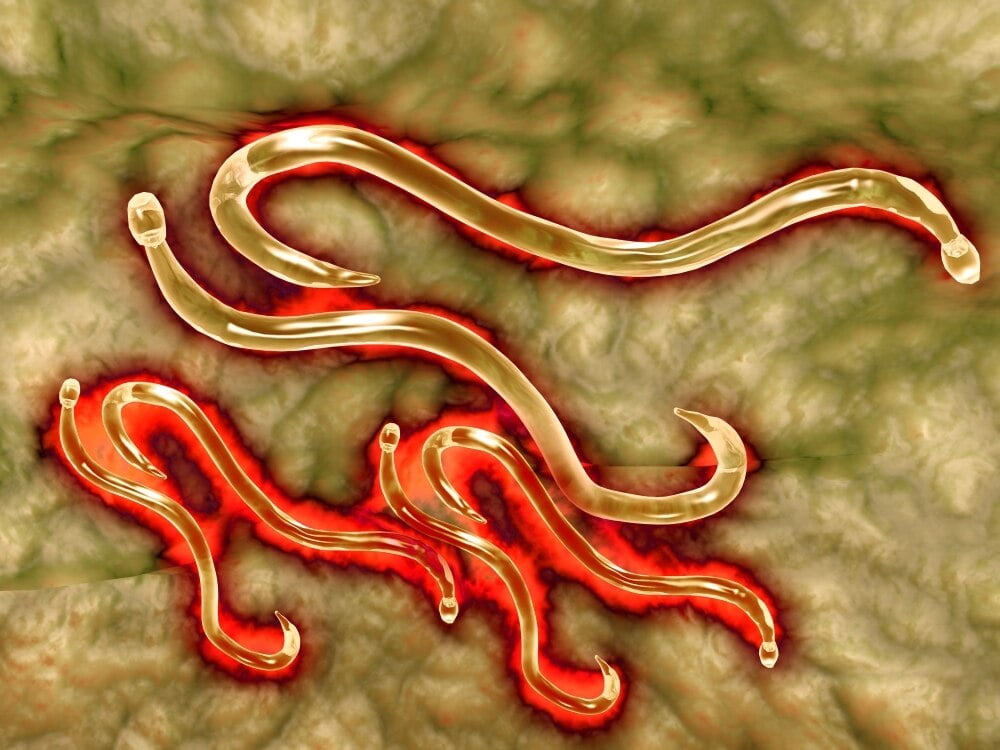


This study reports for the first time the detection of A. In a subset of 70 faecal samples, Ancylostoma caninum (n = 59) was the most common species, followed by A. Estimates of faecal prevalence were high in counties receiving higher rainfall (Narok 46.80%, Meru 44.88%) and low in those with a more arid climate (Isiolo 19.73%, Turkana 11.83%). and Uncinaria stenocephala were performed, and hookworm species were identified by PCR-restriction fragment length polymorphism (RFLP) or DNA sequencing. Polymerase chain reaction (PCR) assays targeting the internal transcribed spacer (ITS) 1 and 2, 5.8S and 28S ribosomal RNA of Ancylostoma spp. Dog faecal samples were collected from the environment, and hookworm eggs were isolated by zinc chloride flotation and subjected to DNA extraction. This study determined the prevalence and species of hookworms in dogs from different climatic zones of Kenya. There is little information on canine hookworm species and their public health significance in sub-Saharan Africa.
HOOK WORMS IN DOGS SKIN
Speak with your local Greencross Vets today about the best prevention plan for your pet.All canine hookworms are known to be zoonotic, causing infections ranging from transient skin irritations to prolonged ‘creeping eruptions’, eosinophilic enteritis and even patent intestinal infections. Hookworm is better prevented than treated.
HOOK WORMS IN DOGS FREE
Also keep bowls and bedding clean and free of faecal contamination. Remember to always wear gloves and wash your hands afterwards. Picking up dog faeces and regularly cleaning your cat’s litter tray will prevent build up of eggs in your environment. It is also important to prevent contamination of your yard. Pregnant cats and dogs should be wormed at mating then at about week 6 of pregnancy. wear gloves when cleaning up after your pet and wash your hands before eating. Standard hygiene practices should be followed at all times i.e.

Hookworm can also infect people by burying through undamaged skin or by oral ingestion of contaminated material. Also, keep bowls and bedding clean and free of faecal contamination. Remember to always wear gloves and wash your hands afterward. Picking up dog faeces and regularly cleaning your cat’s litter tray will prevent a build-up of eggs in their environment. Speak to your local Greencross Vets about the best worming regime for your pet. Pregnant cats and dogs should be wormed at mating then at about week six of pregnancy. Puppies and Kittens should be wormed every two weeks until 12 weeks of age, then once a month until six months old, then every three months for life. Drontal) and following an appropriate regime. Hookworm can be easily prevented by regular worming with a good quality wormer (eg. If your pet is anaemic or very lethargic, they may need to be hospitalised and given a life-saving blood transfusion. This is because larval stages, as well as newly contracted worms, are not killed by the first dose. TreatmentĮliminating the worm with an effective wormer and then a regular worming regime is the best treatment. Consult your veterinarian immediately if you notice this symptom. This may be hookworm eggs or the eggs of a different intestinal parasite. You may notice tiny, white flecks in your pet’s stools. Hookworms produce a large number of eggs and can usually be easily identified. How is it diagnosed?Ī faecal sample can be tested by your vet clinic for hookworm eggs. Young puppies and kittens may fail to thrive and never reach their size potential. diarrhoeaoften ( with blood and mucous).Young puppies are the most severely affected by hookworm, although dogs and cats of any age can be carriers or become infected. The adult worms attach to the small intestine and feed off blood and the intestinal wall. Hatched larvae can penetrate directly through the skin or the digestive system. They can be picked up from the ground, transmitted to puppies and kittens via the mother’s placenta before birth, or in milk from their mother. The eggs (or ova) can be directly ingested from faecal contaminated food. In reasonable numbers, they can cause illness and even death. They live attached to the intestine of dogs, cats, and people. Adult worms are approximately 16 mm long and very thin. There are two species of hookworm which affect dogs and cats in Australia – Ancylostoma and Uncinaria.


 0 kommentar(er)
0 kommentar(er)
